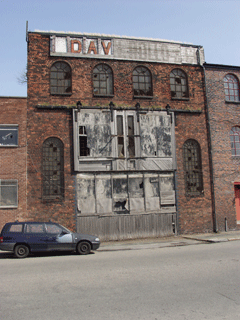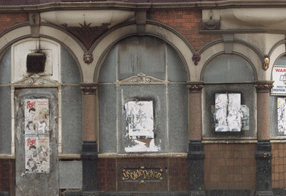|

Weathered and broken nameboard shows changes of ownership at abandoned warehouse on Liverpool’s Dock Road
|
Abandonment is a process. There’s nothing static about an abandoned building. Slowly the brickwork crumbles. Windows get broken. Doors get boarded up. Paint cracks and fades. Vandals attack. There comes a critical point – the point of no return – when a decaying building slips inexorably from being empty but useable, to being fit only for demolition. Some buildings are abandoned and then re-used – churches are a prime example – but for most buildings abandonment ultimately leads to demolition.
Abandoned buildings last longest in poorer areas, where land is of little value. Thus in the once great industrial towns and cities of northern England there are many abandoned buildings: mills in Manchester, street upon street of terraced houses in Burnley. By contrast there are few abandoned buildings in the prosperous and overcrowded south-east of England. When a building becomes redundant in London it is usually pulled down quickly so the land can be re-used.

|
